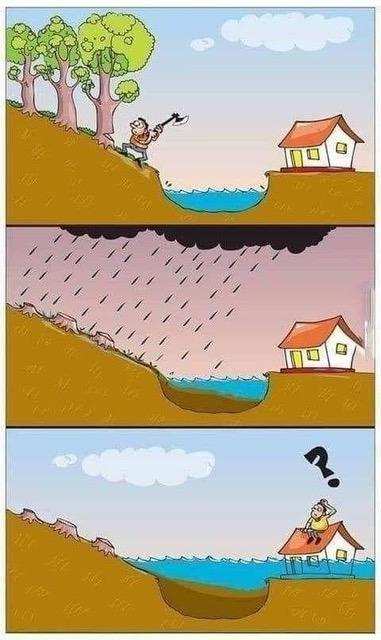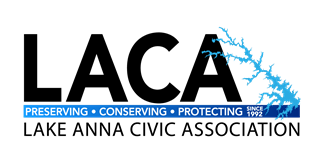By Harry Looney – April 2022
Thank you for participating in the 2021 LACA Member Survey. The Water Quality Committee included four questions in the survey and water quality was included as responses in questions 30 and 31. We would like to update our members on the results and the Committee’s status on responding to the inputs and comments.
Question 1 dealt with how LACA communicates our water quality monitoring results. All water quality data is posted on the LACA website under the Water Quality Committee page. You can get to the Water Quality Committee landing page at this link: https://www.lakeannavirginia.org/Water-Quality. You can also view the plots and data maps posted for water quality and cyanobacteria monitoring at this link https://www.lakeannavirginia.org/Water-Quality-Data. LACA also provides updates on our Water Quality Monitoring Program through regular newsletter articles, Facebook updates, and E-grams.
The 2021 Member Survey results show that 64% of our members use the LACA website to obtain our water quality updates and 62% are also updated from our E-grams. We received 44 comments on how our members obtain water quality information. Many of our members receive information from the Central Virginian, their HOA newsletters, word of mouth, and through the Lake Anna Advisory Committee (LAAC).
Question 2 dealt with identifying other means for communicating HAB data and information. 71% of survey respondents selected SMS-texting to better communicate our water quality data. Twitter received a 5% response and Instagram received a 7% response. There were 95 comments to this question – a fantastic response! The primary communications means addressed in the comments was email. Local news media coverage was also mentioned by several of our members. In response to the large number of comments requesting email notices, the Water Quality Committee will send an email to all LACA members when water quality data is updated on our website. In addition, given the overwhelming response to SMS text messaging, our Board is researching cost-effective messaging platforms that we could use to inform those of you that opt-in to this form of messaging. More information on this form of communication with our members will be provided as we move toward adopting a messaging platform.
The Water Quality Committee is also researching existing crowd-sourcing platforms designed specifically to track and monitor HABs. One such platform is BloomWatchhosted by the US Environmental Protection Agency (EPA). Please consider downloading and using this iOS and Android application and send us comments if you like it or if you know of other apps that we might use to keep our members informed of HAB status and LACA HAB responses in 2022. Send your inputs to Harry Looney at harry.looney@lakeannavirginia.org.
Question 3 asked if our research, data collection and analysis efforts impact use of the lake recreational resources. 87% of those responding stated that the information provided by LACA does impact their decision-making processes.
We are pleased that our program provides relevant, valuable information to our members but there is always room for improvement. If you have any thoughts on how our efforts might be improved please reach out to the Water Quality Committee leads, Mike Gelber at mike.gelber@lakeannavirginia.org and Harry Looney at harry.looney@lakeannavirginia.org.
Question 4 asked if there are other water quality issues that you are concerned about. There were 130 responses to this question. Here are a couple of the concerns that were brought to our attention. While we are just listing a few of these concerns in this newsletter we are investigating each input to determine where LACA might be best positioned to address the concern. E.coli monitoring was mentioned several times in the concerns. LACA has tested for E.coli since we began water quality monitoring in 2002. We sample all areas of the lake and several stream locations four times a year and publish those results on our Water Quality Data webpage.
Another concern that was mentioned by several members is the status of Contrary Creek. The Department of Environmental Quality (DEQ) listed Contrary Creek as impaired for multiple metals and low pH (acidic) in their Integrated Assessment Report in 2020. The creek has been listed as impaired for many years due to the historic mining activities that took place in the Mineral area along the banks of the creek. LACA has spoken with DEQ on several occasions about the status of Contrary Creek and we will continue to reach out to the appropriate state authorities on what can be done to improve water quality in the creek.
Septic tank issues were also mentioned by several respondents. Leaking or failed septic systems can release large amounts of nutrients (phosphorous and nitrogen) into the water table that eventually makes its way into the lake. These nutrients are the primary cause for cyanobacteria growth resulting in Harmful Algae Blooms. We are reviewing our data to determine if septic systems could potentially be a contributor to the HAB issues we have been experiencing the past four years.
Several respondents wrote that water quality monitoring on the hot side should be adopted. We are not sure how this misperception got started but LACA has always monitored the hot side during our regular monitoring sessions in April, June, August, and October. We currently monitor seven stations, one at the power plant outfall, two on Elk Creek, two on Mill Pond, one on Coleman Creek, and one on Rock Creek. Other areas of concern that LACA is investigating include, silting/sediment, fish toxin levels, leaf debris, pesticides, and non-native plant species.
Question 30 asked our members for volunteer support of LACA’s programs and other efforts. Twenty-three people stated that they would like to volunteer in support of LACA’s water quality programs. The Water Quality Committee prepared a Google Form outlining each of the projects that will be executed in 2022 to learn which projects people would like to volunteer for. The form was sent to each of the more than 35 current volunteers and the 23 people that responded to the Member Survey. If you responded that you wanted to volunteer for the water quality programs but did not receive the form, please reach out via email to Harry Looney at harry.looney@lakeannaviriginia.org.
Question 31 allowed respondents to provide additional comments that were not covered elsewhere in the survey. Three of the comments were assigned to the Water Quality Committee. The first comment stated that algae blooms should be the #1 concern right now. We agree! We are working with the Environmental Preservation Committee and other members of the LACA Board on a Cyanobacteria Mitigation, Remediation, and Prevention plan that we would like to execute in 2022. You will see a lot more on this effort soon via LACA E-grams, our website, and hopefully in the local news media.
The second comment assigned to the Water Quality Committee was from a respondent that said they would volunteer for water quality sampling if it was done on the private side. Again, we are not sure how this misperception started but LACA has tested the private side for many years during our April, June, August, and October sampling sessions. We will continue to sample the private side in 2022 and beyond.
The third comment assigned to the Water Quality Committee dealt with excess amounts of sediment being introduced into the lake and coves. The sediment is coming from upstream locations and must be managed at the source.  LACA is investigating mitigation means and funding sources to implement the measures in our Cyanobacteria Mitigation, Remediation and Prevention plan focused on nutrient reduction from upstream sources. These nutrient mitigation measures also impact the amount of sediment that enters the creeks and streams so it could have a positive effect on the sedimentation that is occurring in some of the coves around Lake Anna.
LACA is investigating mitigation means and funding sources to implement the measures in our Cyanobacteria Mitigation, Remediation and Prevention plan focused on nutrient reduction from upstream sources. These nutrient mitigation measures also impact the amount of sediment that enters the creeks and streams so it could have a positive effect on the sedimentation that is occurring in some of the coves around Lake Anna.
Interested LACA members are welcome to volunteer in support of LACA’s Water Quality Monitoring Program. Contact the Water Quality Project Officer at harry.looney@lakeannavirginia.org if you are interested in learning more or volunteering.
harry.looney@lakeannavirginia.org
